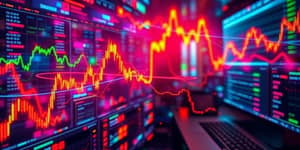
In 2025, a seismic shift is unfolding in the world of institutional investing. Hedge funds, long known for their rigorous research and sophisticated strategies, are now harnessing the power of rapid advancement of artificial intelligence technology to refine their trading models.
From generating predictive signals to managing complex risks, AI is becoming a pillar of modern fund management.
Initially relegated to pilot programs, generative AI and machine learning have moved to center stage, underpinning day-to-day research and execution. No longer experimental, these technologies empower funds to process massive, heterogeneous financial data in real time.
Firms deploy retrieval-augmented generation (RAG) models to mine internal research databases, surfacing actionable insights that human analysts might overlook. By integrating both in-house platforms and third-party solutions, hedge funds maintain regulatory compliance and data privacy while scaling their analytical capabilities.
Empirical evidence underscores the impact of AI-driven signals on fund performance. According to a 2024 SEC report,
AI-driven hedge funds outperformed peers by an average of 12%, while machine learning–based statistical arbitrage delivered 5–7% higher returns for industry leaders.
Transaction costs have also seen dramatic reductions. Advanced algorithms optimize trade execution, contributing to a 20–30% drop in transaction slippage and saving institutions billions annually.
With greater power comes heightened responsibility. The rapid proliferation of AI in trading has prompted regulators to tighten oversight. The SEC’s 2025 guidelines mandate explainability in AI-driven decisions, requiring funds to document algorithmic logic and risk assessments.
Simulated macroeconomic scenario analysis, powered by generative models, identifies hidden vulnerabilities and evaluates portfolio resilience under stress. Yet the specter of AI-generated misinformation—exemplified by the 2023 hoax Pentagon explosion image—highlights the need for rigorous validation and human vigilance.
The true competitive edge lies not in replacing human judgment, but in amplifying it. Top funds cultivate multidisciplinary teams—data scientists, sector experts, and seasoned traders—who collaborate with AI tools to refine hypotheses and interpret signals.
This symbiotic approach drives both innovation and accountability, ensuring that ultra-fast machine-speed data analysis is tempered by seasoned market expertise and intuition. As AI models adapt to evolving market regimes, human oversight remains essential for strategic calibration and ethical governance.
Despite the advances, hurdles persist. Model risk looms large when input data is incomplete or skewed. Overreliance on AI could exacerbate systemic risk if multiple funds react identically to signals.
Yet the potential rewards are immense. Emerging trends point to:
Funds that master the blend of AI innovation and human acumen will set the benchmark for performance and resilience in the years to come.
By 2025, AI-generated signals have reshaped the hedge fund landscape, delivering superior returns, operational efficiencies, and advanced risk management.
However, success demands vigilant governance, transparent processes, and a relentless focus on data integrity. As hedge funds evolve, the human-machine partnership will remain the linchpin of sustainable alpha generation and market stability.
In an environment of rapid technological progress, those who embrace AI with responsibility and insight will lead the next wave of financial innovation.
References













